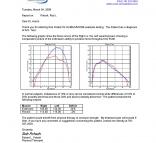


Save the form, and then distribute it as you would any other document that you send for review.Ĥ) Under Customize the Ribbon, click Main Tabs.ĥ) In the list, select the Developer check box, and then click OK. Open a template or a document on which to base the form.ĭesign the form by sketching a layout first, or use an existing form as a guide. You can then format the text box borders, background color, text color, and so on.īorders and shading: these can designate text areas to be filled in and generally help make key elements in the form attractive and easy to follow.Ĭreate forms that users complete in Word You need to complete several tasks to create forms for users to view and complete in Microsoft Word: Text boxes: these are useful when you want to precisely position a block of text, a graphic, or a chart. If the layout is more complex, you can insert several tables and separate them with Tables to help you align text and form controls: tables generally work well when you're creating a form with a simple layout. Other forms are based on a grid, in which you can combine features such as: Many forms, such asĬontracts, consist solely of text, with form fields inserted throughout the document so users can provide You can use text fields, check boxes, and drop-down lists.ĭesigning a form When designing a form, you can sketch a layout first, or use an existing form as a guide. This form is distributed and collected by using e-mail or by posting it on a network location. You can insert blanks for users to complete as well as check boxes that list choices, such as Yes and No.Ī form that users view and complete in Word. Many are available on the Microsoft Office Online Web site.Ī form that is printed and then filled in on paper. You can create a form in Microsoft Office Word by starting with a template youve created and addingĬontent controls, including text boxes, date pickers, and drop-down lists. You can then compile the information you collected. Others can fill it in on paper or in Microsoft Word. Note: You can print a form that was created by using content controls, but the boxes around the contentĪbout printed forms and forms for use in Word A form is a structured document with spaces reserved for entering information. Many form templates are available on the You can also create a form by starting with a template. In an advanced scenario, any content controls that you add to a form can also be linked to Other people can use Word to fill out the form on You can create a form in Microsoft Word by starting with a template and adding content controls, includingĬheck boxes, text boxes, date pickers, and drop-down lists. STEP 5: ADD INSTRUCTIONAL TEXT TO THE FORM. STEP 4: SET OR CHANGE PROPERTIES FOR CONTENT CONTROLS. 5 Insert a drop-down list box that restricts available choices to those you specify. Insert a check box next to an independent option that users select or clear. 5 Insert a fill-in field where users can enter text. Insert a text control where users can enter text. STEP 2: OPEN A TEMPLATE OR A DOCUMENT ON WHICH TO BASE THE FORM. 2ĬREATE FORMS THAT USERS COMPLETE IN WORD. ICT Training, Maxwell School of Syracuse University Ĭreating Forms in Word 2010 Table of ContentsĪBOUT PRINTED FORMS AND FORMS FOR USE IN WORD. Handout: Creating Forms in Word 2010 Topics came directly from Microsoft Word 2010 Help.


 0 kommentar(er)
0 kommentar(er)
